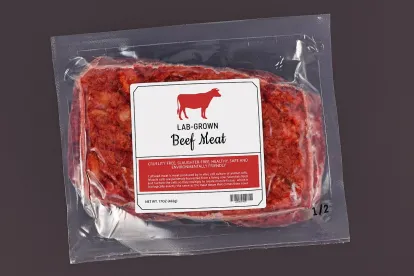Cultured meat and its introduction into our grocery stores and restaurants is on the horizon. The FDA has established a premarket consultation process which allows companies who would like to market cultured meat in the U.S. to work with the FDA towards approval of their products. Information submitted to the FDA as part of that process includes the scientific explanation of how the meat is made, the cell lines used, the growth medium(s) used to culture the cells, the culturing process, harvesting, etc. Cultured meat products have not yet been approved for sale in the U.S., but UPSIDE Foods Inc. recently completed the premarket consultation process with the FDA and received a No Questions Letter from the FDA.
You might ask, what cells are used to make lab-grown meat? The multi-step science behind cultured meat relies first on the collection and development of a cell line. Cell lines are created from a particular type of cell that can self-renew and differentiate into the cell types that make up meat tissue. Current research and development in food biotechnology are working with isolated stem cells, which have the ability to proliferate (multiply) in an undifferentiated state when maintained in a nutrient rich environment.
The cell types that have the most promise in the cultivated food industry include satellite stem cells and induced pluripotent stem cells (iPSC).
The cell types that have the most promise in the cultivated food industry include satellite stem cells and induced pluripotent stem cells (iPSC).
Skeletal muscle tissues, taken by biopsy from an adult animal, contain satellite cells that are responsible for cellular regeneration and muscle tissue repair. These cells are abundantly available in all skeletal muscle tissue and have the natural ability to self-renew and differentiate into desired muscle cells. These cells normally remain in an inactive, quiet stage and would require specific activation to proliferate in a laboratory setting.
Induced pluripotent stem cells, also taken by biopsy, are created from genetically modified adult stem cells (fibroblasts). Current food biotechnology uses the same concept as our vaccine industry with the use of viral and recombinant RNA to cellularly reprogram the stem cells. It is believed that the Israeli based meat company, once Future Meat, now Believer Meats, is most likely using this technology to produce their own cell lines using fibroblasts. The major challenge with using stem cells is the amount of multiplication and growth required to produce an adequate volume of meat. Although the cells have the ability to self-renew, it is limited by what is known as the Hayflick limit (the number of times cells divide before permanently stopping, known as senescence). Modifications to cells’ genes can increase the cells’ Hayflick limit or even make the cells “immortal,” thus creating a cell line that can be consistently reproduced over and over.
Reproducibility and consistency are important for cell lines. Due the large number of cells needed to make cell-based meat at scale, there is an increased probability of genetic variation. Therefore, the need of genetically stable cells line are important for the industry to thrive. Currently, there are few publicly available cell lines in biorepositories for the agriculture industry to use for cell-based meat production. Good Food Institute is funding a project, the “Frozen Farmyard”, to accomplish the goal of having a diverse array of animal species cell lines for use in biotechnology and animal conservationism.
As stated in a previous article, Believer Meats broke ground on building a facility in Wilson, North Carolina with the claim of being able to produce 10 metric tons of meat per year. It seems just a matter of time before our meat will be lab to fork instead of farm to fork. We will continue to monitor developments in this evolving industry and publish updates as needed.
Lindsey Snyder, Nurse Consultant, also contributed to this article.



 />i
/>i

